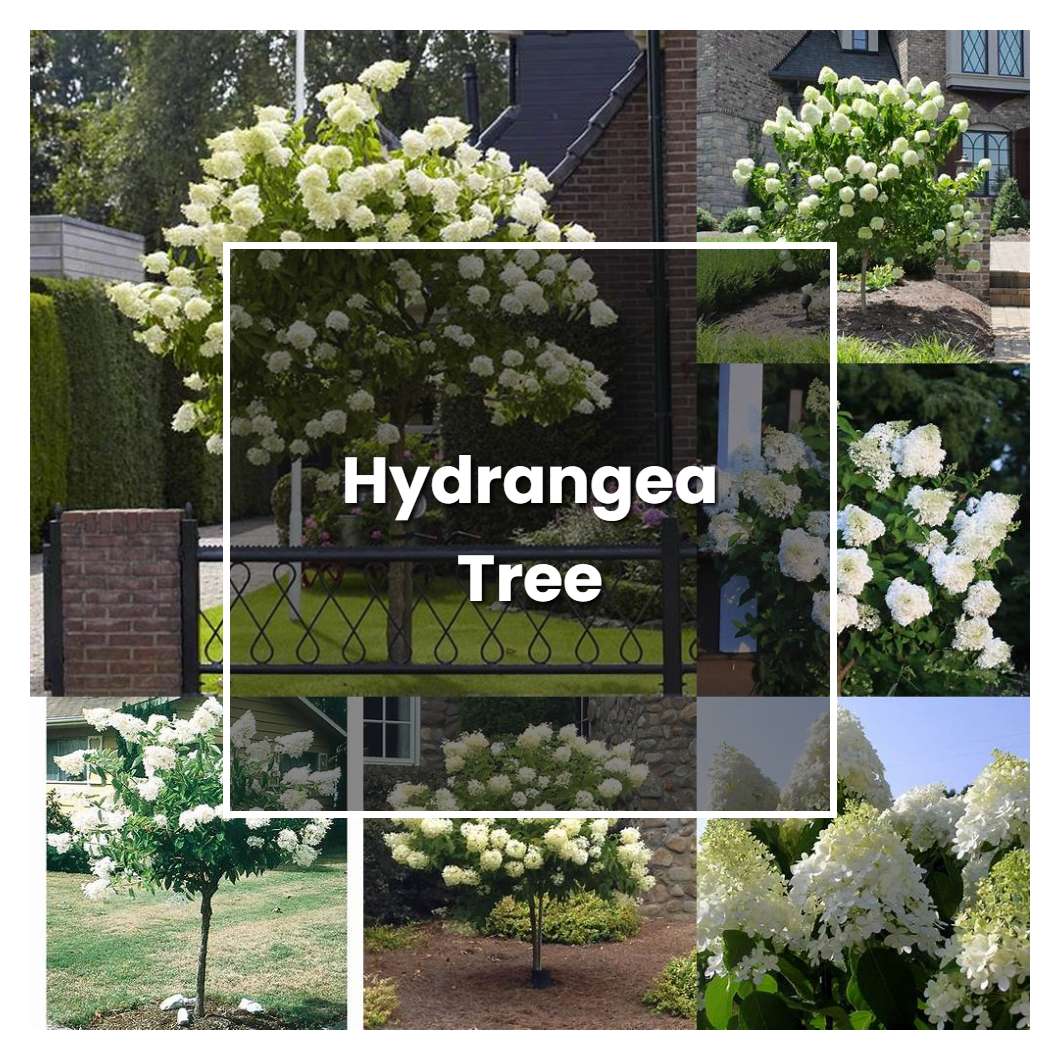Hydrangea tree is a shrub that can grow to be as tall as a tree. They have big, round flowers that can be any color from white to blue. Hydrangea trees are native to Asia, but they can be found in other parts of the world too.

Related plant:
Hydrangea Paniculata Diamant Rouge
Related plant:
Oakleaf Hydrangea
About soil condition, a hydrangea tree likes a pH between 5.0 and 6.5, and they prefer soil that is moist but well-drained. They will not tolerate wet, mucky, or dry soils. A hydrangea tree's roots are shallow, so be careful not to plant it too deeply. amended with organic matter.
Just like other hydrangeas, hydrangea trees need at least 4 to 6 hours of sun exposure every day in order to thrive. If your tree is not getting enough sun, it will likely have fewer blooms and its leaves may start to turn yellow. To ensure that your hydrangea tree gets enough sun, plant it in an area of your yard that receives direct sunlight for most of the day.
The temperature condition that is best for a hydrangea tree is one that is cool but not cold. The tree does not like it when the temperature gets too low, as this can damage the leaves and flowers. The ideal temperature for a hydrangea tree is between 60 and 70 degrees Fahrenheit.
Ideal humidity condition for this plant is around 50%. If the air is too dry, the leaves will wilt and the flowers will droop. If the air is too humid, the leaves will yellow and the plant will be more susceptible to fungal diseases.
Mentioning fertilizer, usually the plant that comes to mind is a green, leafy vegetable or a flower. However, there is one tree in particular that benefits greatly from fertilizer, and that is the Hydrangea tree. This tree is known for its large, beautiful blooms, which come in many colors. The Hydrangea tree does best when its roots are given plenty of room to grow. When planting, make sure to dig a hole that is twice the size of the tree's root ball. This will give the roots the space they need to spread out and grow properly. Once the tree is established, give it a fertilizer specially formulated for trees and shrubs. This will help the tree produce more flowers.
Pruning a hydrangea tree is important to keep it healthy and looking its best. There are a few things to keep in mind when pruning a hydrangea tree. First, make sure to prune in late winter or early spring. This will give the tree time to recover from the pruning before new growth begins. Second, prune no more than one-third of the tree. This will keep the tree from being too stressed and will allow it to continue to produce flowers. Finally, be sure to use sharp pruning shears to make clean cuts. This will help the tree heal quickly and prevent disease.
Propagation is usually done by taking cuttings from new growth in late spring or early summer. The cuttings should be about 4-6 inches long and taken from the tips of the stems. Make sure to remove any leaves from the bottom half of the cutting. Dip the bottom of the cutting in rooting hormone and plant in a pot filled with moistened perlite or vermiculite. Keep the pot in high humidity and out of direct sunlight until roots form.
Usually, the plant growth rate is rapid in the first few years after planting. However, the growth rate slows down considerably after the plant matures. Full-grown hydrangea trees can reach a height of 15 to 20 feet and a width of 10 to 15 feet.
Common problems for this kind of plant are leaves turning yellow and wilting, brown spots on the leaves, and powdery mildew. To prevent these problem, make sure to plant your hydrangea tree in an area that has well-drained soil and gets plenty of sunlight. Additionally, water your tree regularly and fertilize it every few months. If you notice any of these problems, you can try pruning the affected areas or using an fungicide.
Source:
HYDRANGEA - HYDRANGEA SPP. | The UFOR Nursery & Lab
Growing Hydrangeas - Center for Agriculture, Food, and the
Hydrangea - University of Connecticut
